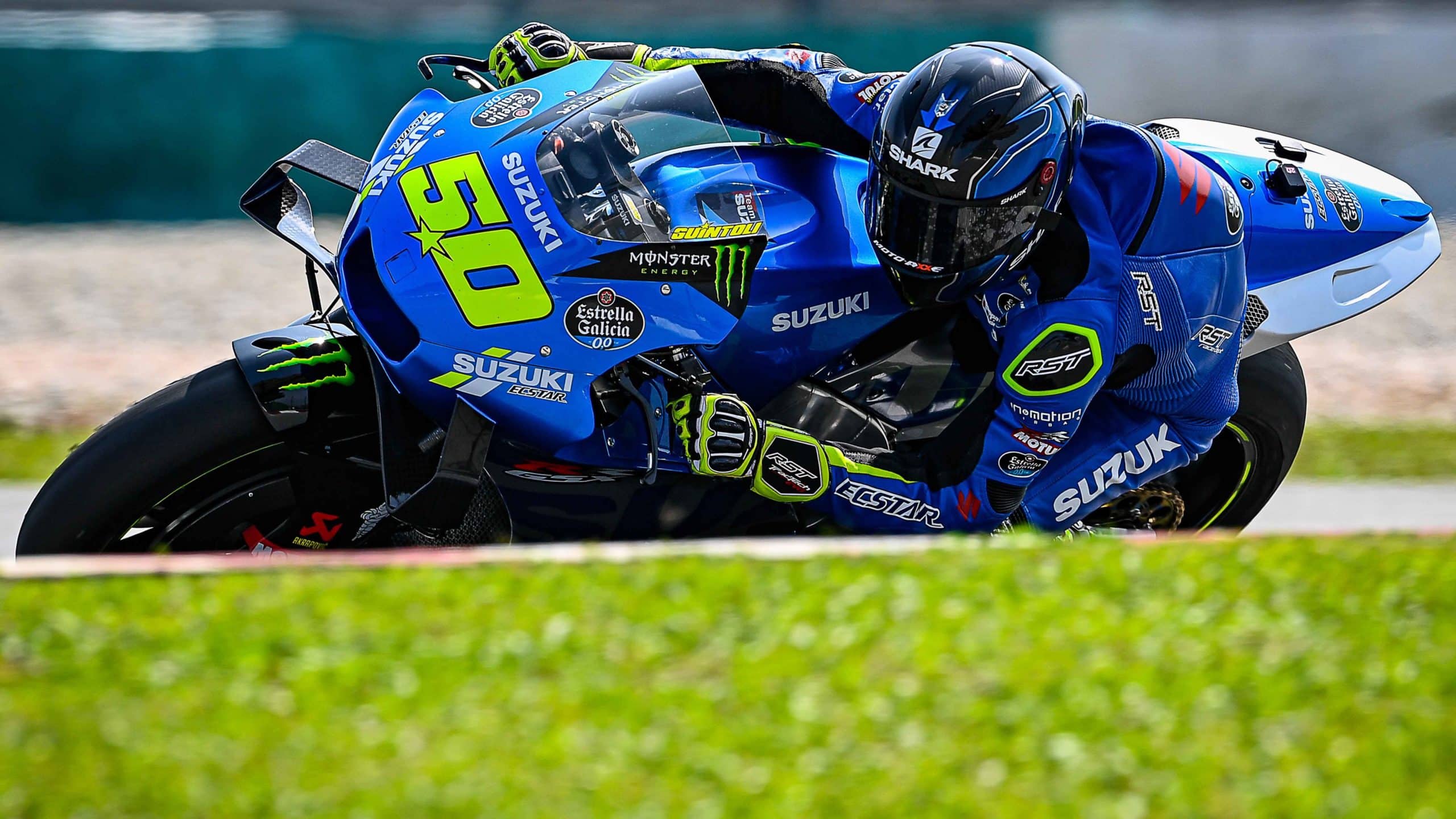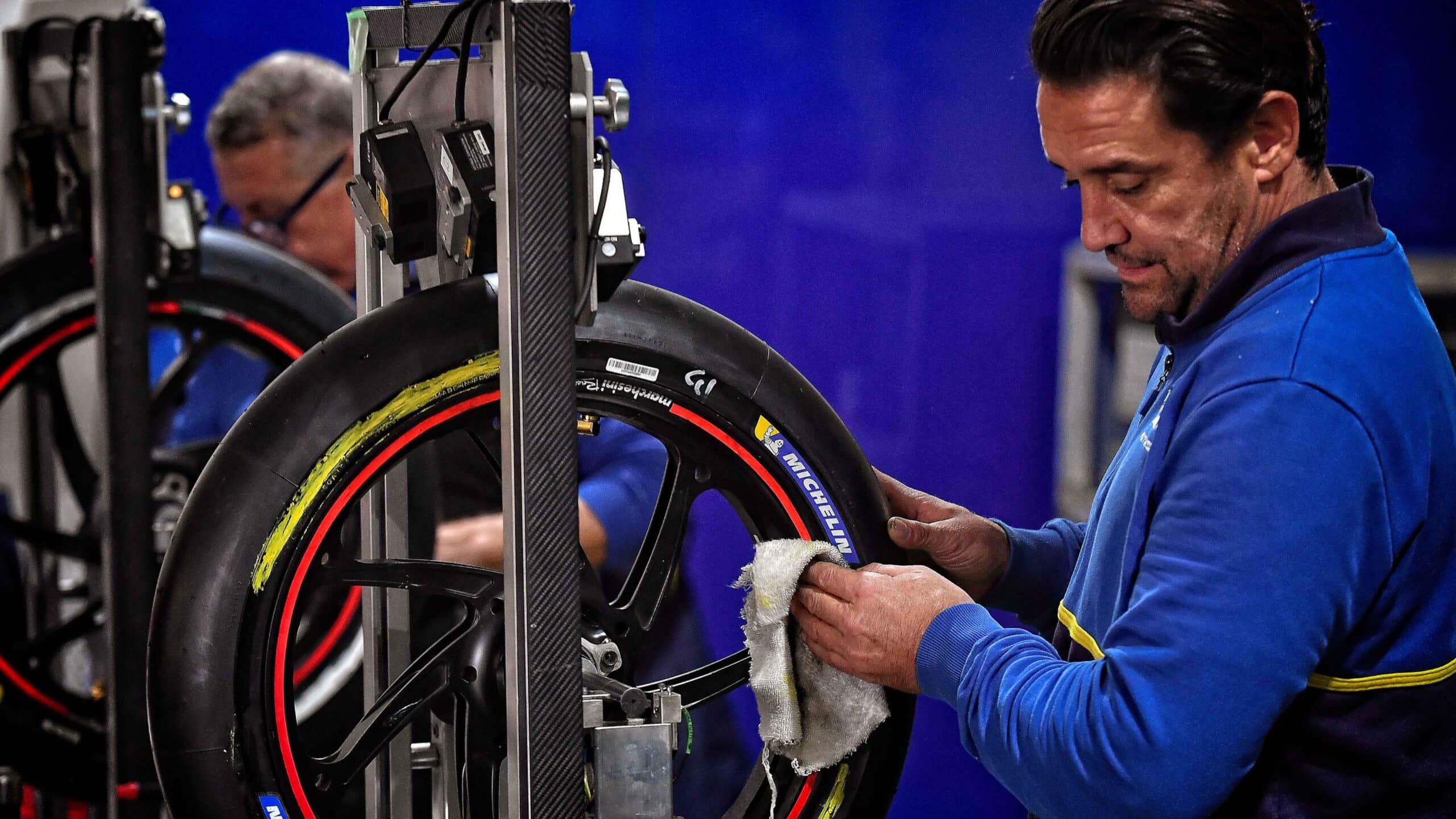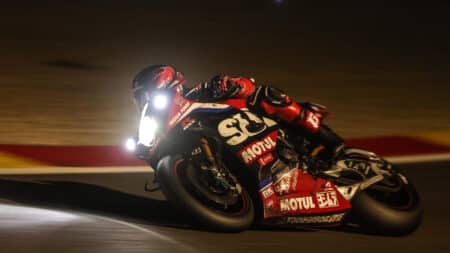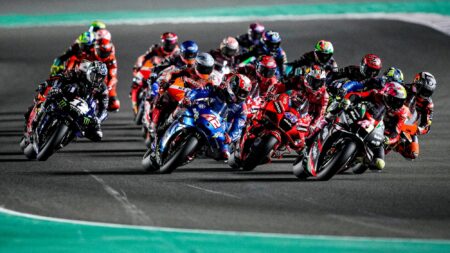Guintoli is testing the new slick aboard a heavily modified Honda Fireblade CBR1000RR-R superbike, with the front end designed to work like a MotoGP bike, with Brembo carbon discs and Öhlins MotoGP forks.
The 40-year-old Frenchman is the ideal man to test the tyre, because he won the EWC crown with Bridgestone, who produce an awesome front slick, and the WSB title with Pirelli, who also make a very capable front slick. For obvious reasons, Guintoli is barred from talking to the media about his Michelin work.
Meanwhile, MotoGP still has to get through 2023. The minimum pressure rules, which have been in place for several years but never enforced, were due to be enforced for the first time from last month’s French Grand Prix. But the teams are still getting used to the complex policing system, which uses rim sensors to send live tyre-pressure readings to race control throughout every race and qualifying session. Riders must be above the minimum pressure for at least a moment in a qualifying lap and for at least half each race.
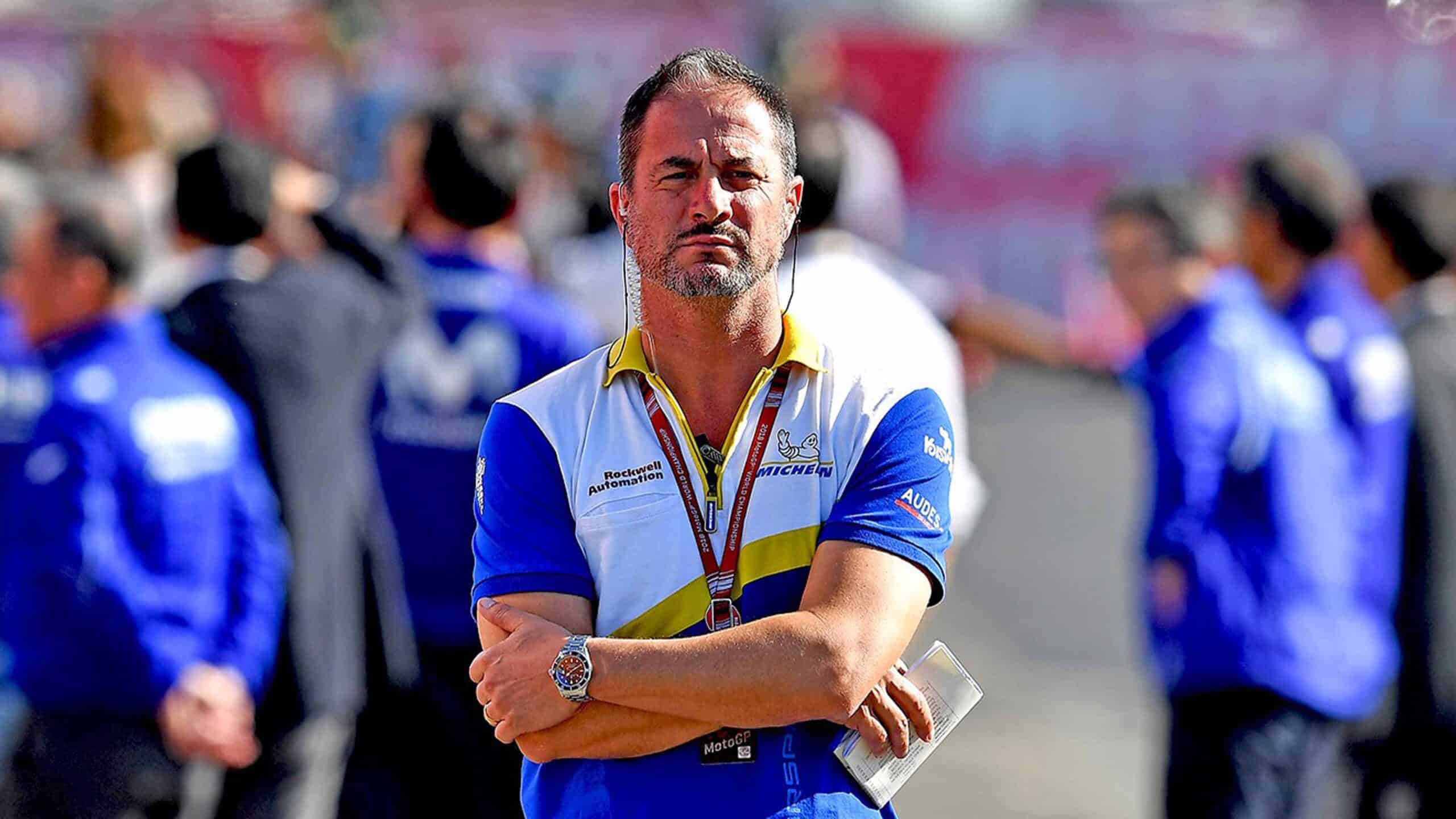
Taramasso runs Michelin’s motorcycle racing activities, so he oversees front slick development
Michelin
The current plan is to enforce the rule from August’s British GP, but the challenges of maintaining pressure between 1.88 bar and, say, 2.05 bar for 50% of a race are immense. And if riders get disqualified for failing to reach that 1.88 minimum it will turn MotoGP into a mess. So might enforcement of the rule be delayed until 2024, when it will be less tricky to stay within the window?
Many MotoGP riders already have tyre-pressure warning lights or readings on their dashes – to alert them to too-high or too-low front pressures – so Taramasso doesn’t believe it will be too big a problem for riders to adapt to the enforcement of the regulations.
“Riders will just have to try not to overload the front tyre during braking and entering,” he adds.
